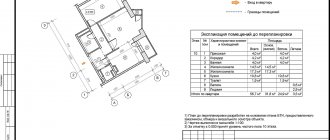In order for a person to have legal grounds to use the territory in 2021, he must have ownership rights. Each plot is assigned to one of seven categories into which all land in Russia is classified. They determine for what purposes the territory can be used, for example, for industrial activities, gardening or the construction of a residential building.
Categories of land plots
Dear readers! The article talks about typical ways to resolve legal issues, but each case is individual. If you want to find out how to solve your particular problem , contact a consultant:
+7 (499) 110-56-12 (Moscow)
+7 (812) 317-50-97 (Saint Petersburg)
8 (800) 222-69-48 (Regions)
APPLICATIONS AND CALLS ARE ACCEPTED 24/7 and 7 days a week.
It's fast and FREE !
Garden non-profit partnerships or SNTs are used for farming or construction of residential properties.
SNT can consist of land for any purpose, but the most common are agricultural land. Partnerships can be located within populated areas or beyond.
If the owner is part of a partnership, then he also has the right to build non-residential facilities (a bathhouse, for example). Consequently, the territory is excellent for the construction of real estate of various types, but the main problem is the complexity of registration in houses that are located on the territory of such plots. Some situations even lead to litigation.
Land intended for individual housing construction makes it possible to expand the range of rights that a citizen has who wants to register in a house located on the territory of such a site.
Individual housing construction is much better suited for the construction of residential buildings, since this does not even require obtaining permission to construct a building. But there are a number of restrictions on houses that will be located on individual housing construction: only one family can register, the house should not exceed a height of three floors.
Main differences
What is better – SNT or individual housing construction – is difficult to determine at first glance. Therefore, it is worth highlighting the main differences between these categories of land.
They are:
- intended purpose;
- location.
Based on the intended purpose of the plots, the entire system for using them is built . Since individual housing construction is initially intended for development, it is possible to build not only cottages, but also townhouses, duplexes, and other types of residential real estate.
The most important thing is that the buildings are not higher than 3 floors, and the developer has all the necessary permits to carry out work.
But on SNT only the construction of a private house and outbuildings is allowed . A residential building must meet certain parameters:
- be no higher than 3 floors;
- have one owner.
The area of the house is not limited by any rules - the owner of the land plot has every right to erect a small country house with an area of 25 square meters and build a cottage of 250 square meters.
The main thing is that the building does not fall into the category of an apartment building. Otherwise, it is subject to demolition.
The location of plots also determines a lot in the lives of their owners . Individual housing construction is located within the city, and therefore future homeowners will have schools, shops, kindergartens and entertainment centers within walking distance.
In addition, the development of the land plot and adjacent territories is included in federal programs, which means it will be well financed. Although it must be taken into account that within the framework of such programs, the turn to certain settlements may reach in 5-10 years.
SNT refers to lands that have agricultural purposes, and therefore all issues regarding the development and improvement of territories fall on the shoulders of the land owners themselves. This is not a bad thing in all situations.
If the partnership consists of active people with high incomes, then through joint efforts in a couple of years the lands will be perfectly landscaped, and communications will be connected to each land plot.
Individual housing construction or SNT, which is better?
Individual housing construction or SNT are two types of plots that are intended for different purposes. If we take into account only the construction of a residential property for further permanent residence, then it will be more convenient to purchase individual housing construction land. But if the acquired territory will be developed for farming, then it is worth paying attention to the SNT category.
In addition, ownership of a plot that is registered in a partnership does not prohibit the construction of a residential property, but this will require appropriate permission.
Developments on individual housing construction lands will be much more comfortable than SNT for the following reasons:
- There are no additional nuances when registering in the house.
- Building a house from scratch has no hidden nuances; you just need to follow the standards for the construction of residential buildings.
- No membership fees required.
- Repair of communications and roads is carried out by each owner of each plot independently of each other, which exempts them from the mandatory share contribution.
What is the difference?
For a visual comparison, a completed table is best suited, which will show how SNT differs from individual housing construction:
| What is the difference | individual housing construction | DNP or SNT |
| Water supply | Each site is connected to the central water supply system, but if there is none, from personal wells | There is only one well (several only in rare cases), which is paid for from share contributions |
| Gas supply | Probably, if technical capabilities allow this, but additional costs may be charged for use | You can connect only if there is a gas pipeline nearby |
| Other factors | The plot of land is completely private, so the owner has freedom of action | The site is part of a partnership, which is why the owner is obliged to appear at all meetings and fulfill assigned obligations |
| Infrastructure | Since the site is intended for permanent residence, that is, shops, medical institutions, schools, kindergartens, roads, and so on | The site is not intended for residential use, so infrastructure may be limited to roads |
| Sewerage | Most plots are pre-connected to the sewer system, or each house is equipped with an individual drain | A single cleaning septic tank with general expenses covered by share payments |
| Expenses | Property tax, utility bills | Property tax, payments for the use of resources, share contributions, payment for repair work |
| Registration | No problem, just contact the FMS with the appropriate application | There are many nuances that do not allow you to register, but in some cases exceptions are possible |
| Electricity supply | The site is located in advance in a zone with sufficient power, which is provided to the nearest populated area | Connection is possible only if there is a power line nearby; restrictions may be imposed on the amount of power provided |
Individual housing construction - individual housing construction
The construction of a permanent residential building of no more than three floors, for one family, intended for permanent residence is classified as individual housing construction. Such construction is permitted on agricultural land and on the lands of federal or municipal settlements. Individual housing construction lands – individual construction on land plots of village councils. DNP sites – construction of residential buildings on agricultural lands. Based on amendments to the Land Legislation of the Russian Federation, individual plots (the jurisdiction of the DNP) can be located within the boundaries of settlements.
When choosing a plot for an estate, it is necessary to determine the administrative and permitting status of the proposed construction at the design and documentation stage, therefore it is necessary to determine the status of the land plot. Obtaining a building permit and registration depends on the status.
Individual housing construction plots are popular, and the demand for them is growing. During individual construction of housing within the boundaries of the settlement, the owner has access to all utilities and social services. On such lands you can build a house, cottage, or duplex. If compared with lands of another category, individual housing construction lands are much more expensive.
Advantages of individual housing construction:
- The house is assigned an address, so registering there is not difficult.
- Since residential settlements are on the municipal balance, they are provided with infrastructure. There are roads, utilities, garbage is removed, snow is cleared.
- There is a kindergarten, school, outpatient clinic, post office, shops, and accessibility to public transport.
- Fuel and energy issues have been resolved.
- There is the possibility of targeted use of maternity capital.
- When concluding transactions, banks take objects on individual housing construction sites as collateral.
Disadvantages of individual housing construction:
- The size of the plot has restrictions; each region sets its own minimum and maximum criteria.
- Mandatory approval of the construction plan by the authorities.
- Apply for a permit to build a house in accordance with the article of the town planning code.
- Comply with state standards and regulations, sanitary standards during the construction and delivery of a finished house.
- Create a BTI plan.
According to the law, individual housing construction sites must be provided with good roads, all communications, free of charge, but in practice it turns out that the roads are in disrepair, the supply of electricity, gas and water is intermittent.
The procedure for transferring land
Plots that belong to partnerships can be re-registered as individual housing construction, but the whole process will depend on individual factors.
They can have a positive impact, which will allow the registration to proceed easily and simply, or a negative impact – the procedure will take time, additional documents will be required, and so on.
Factors influencing the difficulty of category translation:
- Location of the site. If the land is located far from residential areas and there are no communications, then translation will be difficult.
- Infrastructure. It must be sufficiently developed for comfortable living on a permanent basis.
- Other factors. They are determined in each situation individually.
After determining the chances of transfer, you must go to the municipal administration to express a desire to change the assignment.
For this you will need the following documents:
- Application with a request to change the category of land to another.
- Notarial consent of each owner, if there are several of them, or each of the owners draws up a separate application. In the second case, the personal presence of each owner will be required.
- Cadastral documentation.
- Technical documentation.
- To confirm ownership of the site.
- Extract from the Unified State Register.
- To provide complete information about the site.
After all documentation has been submitted to the administration, the application is considered within one month. The response is sent to the applicant in writing.
Upon receipt of a positive decision, an act on the possibility of transferring the site to another category is attached to the letter. But even in this case, when drawing up and executing the act, a refusal may be given, which must be justified in writing.
If the house, which is being built on the territory of a site owned by SNT, will be used only for temporary residence, then in this case there is no point in changing the category. SNT prohibits registration and residence on a permanent basis, but there are no prohibiting acts regarding temporary stay.
Grounds for refusal
Reasons for refusal to transfer a site to another category:
- a transfer ban has been imposed on the site;
- the site is not suitable for territory development;
- there is no possibility of joining a specific locality, which does not allow assigning an address, making changes to the development plan, and so on.
Analysis of differences
The quickest way to figure out which is better - individual housing construction or SNT - is to use a comparative analysis of the differences, presented in the form of tabular data.
| Characteristic | Land category | |
| individual housing construction | SNT | |
| Electrical networks | The line belongs to the nearest village, so after paying for connection to it, problems with capacity will not arise | The connection is made if there is a line with sufficient power, but even then the power is divided among all members of the partnership and it may not be enough to provide the cottage |
| Water supply | Central water supply | General or individual wells |
| Gas supply | Supply is feasible in most cases, and a number of settlements are provided with gas at a reduced rate | If there is a gas pipeline, connection is carried out at the expense of the owner of the land plot |
| Sewerage | Connection to the central system | Installation of an individual septic tank |
| Solving registration issues | Registration is carried out without delay if all permits are available | The dacha amnesty allows you to register in the shortest possible time and without tedious collection of papers |
| Current expenses | Tax, utility bills | Tax, shares, expenses for current repairs of public facilities |
Even such a detailed analysis will not give a complete picture of what choice to make when buying land . Theoretically, the buyer can draw one conclusion, but in practice the situation will be different.
There are cases when a purchased plot for housing construction required bringing all communications to the borders and introducing them into the territory.
Taking into account the receipt of permits, this process took more than six months and cost the owner several hundred thousand rubles in unplanned expenses.
And, on the contrary, the land of the gardening partnership, located 20 kilometers from the city, already had an installed electric cable and a septic tank. As a result, the preparatory stage of construction did not take even 2 months. They went to drill the well and its equipment.
Based on everything said above, one conclusion can be drawn - each transaction for the purchase and sale of land should be considered individually, taking into account the pros, cons and the amount of additional expenses that the owner will have to bear in the first months.
Differences between DNP and individual housing construction
If the DNP is not located within the boundaries of the settlements, this means that all issues related to the improvement of the dacha village are decided by the owners of the plots independently, at their own expense. This includes: water supply, lighting, roads. A country house is being built on DNP plots for seasonal residence, so registration is not provided. DNP plots are cheaper than individual housing construction, therefore the tax is much lower than for individual housing construction. Banks do not take land and DNP objects as collateral when applying for a mortgage.
At individual housing construction sites, issues related to infrastructure are resolved by municipal authorities. On such lands a permanent building is erected for year-round living, an address is assigned and registration is guaranteed. When applying for a mortgage loan, the land ownership of individual housing construction is taken by banks as collateral. But the price for individual housing construction plots is much higher than for DNP.
Having analyzed the positive and negative aspects, the conclusion arises that the DNP plots are more profitable in terms of pricing policy than individual housing construction . Even difficulties with obtaining registration can be overcome with effort. But there is an opportunity to legally build a permanent house, with all communications. This is a profitable investment for every owner of such a plot.
Repair and construction JurisprudenceComment







